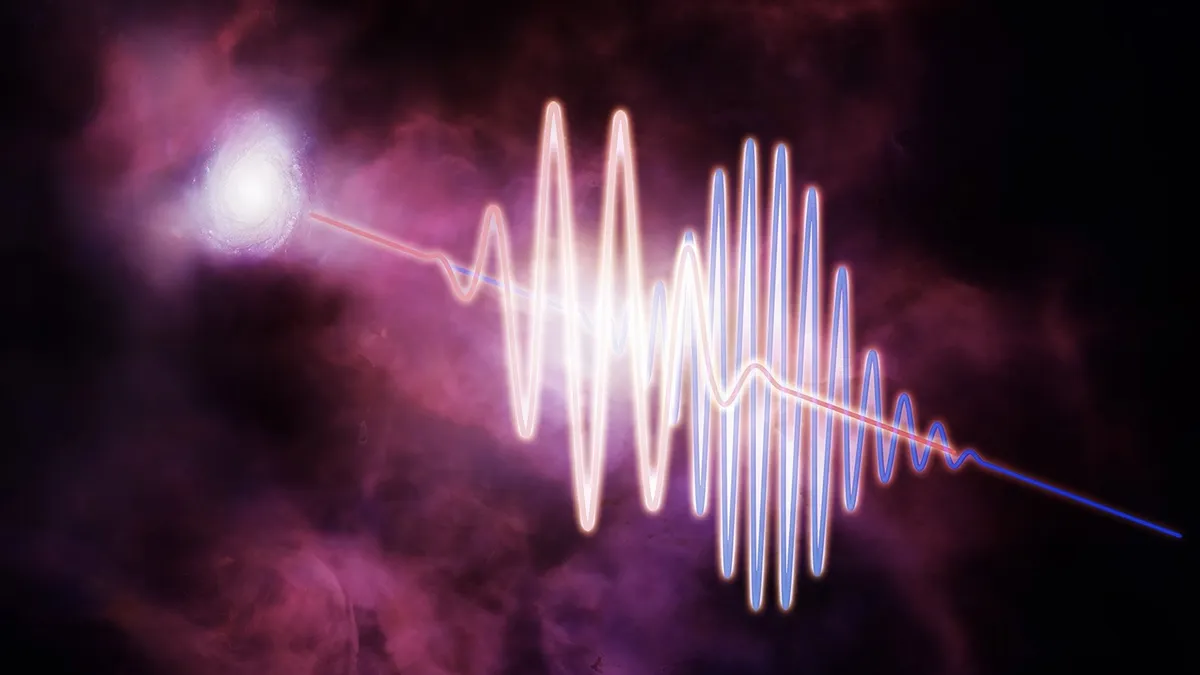
Recent research has revealed that roughly half of all regular matter in the universe has remained unaccounted for — until now. A groundbreaking study published on June 16 in the journal Nature Astronomy suggests that scientists have successfully identified all the baryonic matter — the ordinary matter that constitutes stars, planets, and other luminous objects — that we anticipate exists in the universe. This new understanding comes from utilizing short, extragalactic flashes known as fast radio bursts (FRBs).
Baryonic matter, composed of particles such as protons and neutrons, constitutes merely 5% of the universe's total composition. In addition to this, about 27% is made up of invisible dark matter, while the remaining portion consists of enigmatic dark energy, which propels the universe's accelerating expansion. Despite this knowledge, scientists have only been able to observe approximately half of the expected baryonic matter generated during the Big Bang.
To account for the elusive baryonic matter, researchers examined 69 FRBs, which serve as illuminating beacons in the intergalactic space between the bursts and Earth. Although the origin of FRBs remains unknown, most of these powerful, millisecond-long radio flashes originate outside our Milky Way galaxy. The FRBs penetrate the opaque fog of the intergalactic medium, allowing researchers to measure the light's deceleration and evaluate the density of the intergalactic medium, which is often too faint to observe directly. Study co-author Liam Connor, an astronomer at Harvard University, explained this innovative approach in a recent statement.
Using this method, Connor and his colleagues discovered that approximately 76% of the universe's baryonic matter is located in the intergalactic medium, which consists of hot gas filling the void between galaxies. An additional 15% is thought to reside within galaxy halos — the hot, spherical regions surrounding galaxies. The remaining baryonic matter can be found within the stars, planets, and cold gases inside galaxies themselves.
Vikram Ravi, a study co-author and astronomer at Caltech, likened the findings to seeing a person's shadow: "It's like we're seeing the shadow of all the baryons, with FRBs as the backlight. If you see a person in front of you, you can find out a lot about them. But if you just see their shadow, you still know that they're there and roughly how big they are."
This research marks the first time that scientists have observationally accounted for all baryonic matter in the universe, detailing not only its existence but also its distribution. Nicolás Tejos, an astronomer at the Pontifical Catholic University of Valparaíso who was not involved in the study, remarked to Science magazine that "the missing baryons problem is essentially solved." He emphasized that thanks to FRBs, scientists have now successfully closed the baryon budget.
Looking ahead, the research team aims to utilize the proposed Deep Synoptic Array-2000, a network of 2,000 radio telescopes designed to scan the entire sky over five years. This ambitious project could potentially identify up to 10,000 new FRBs annually, enabling further investigations into the universe's baryonic matter with even greater precision.